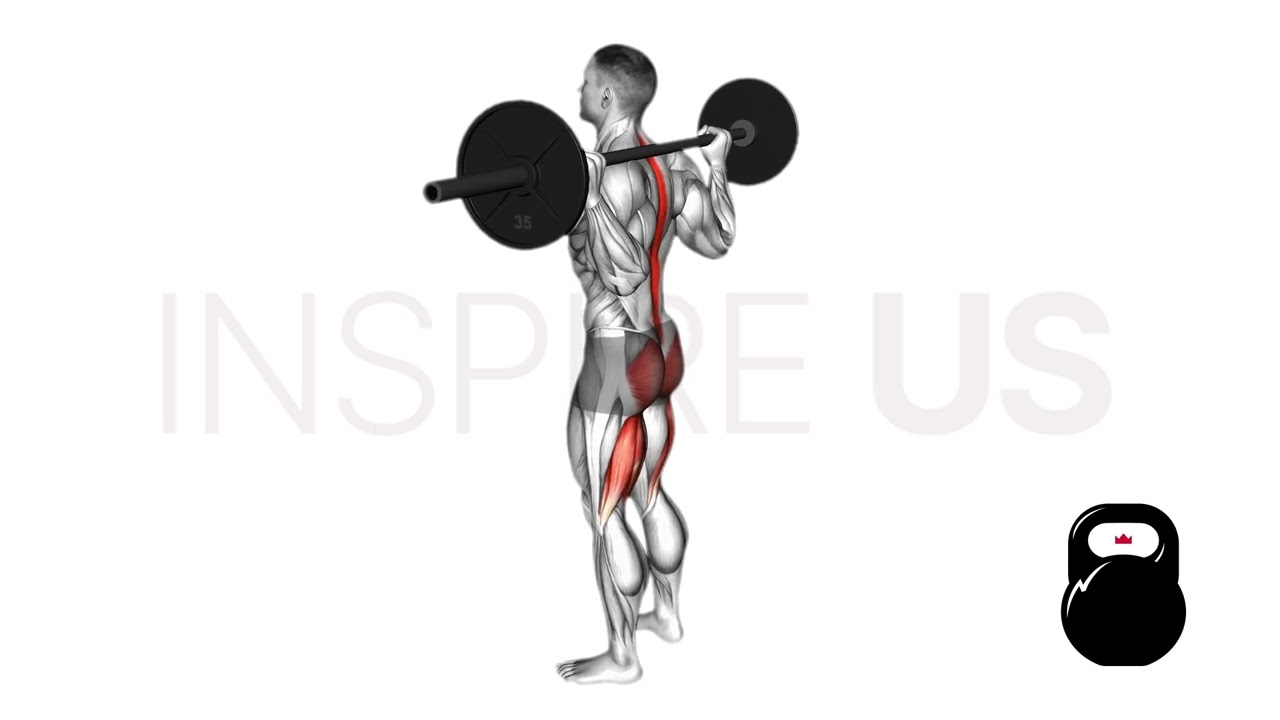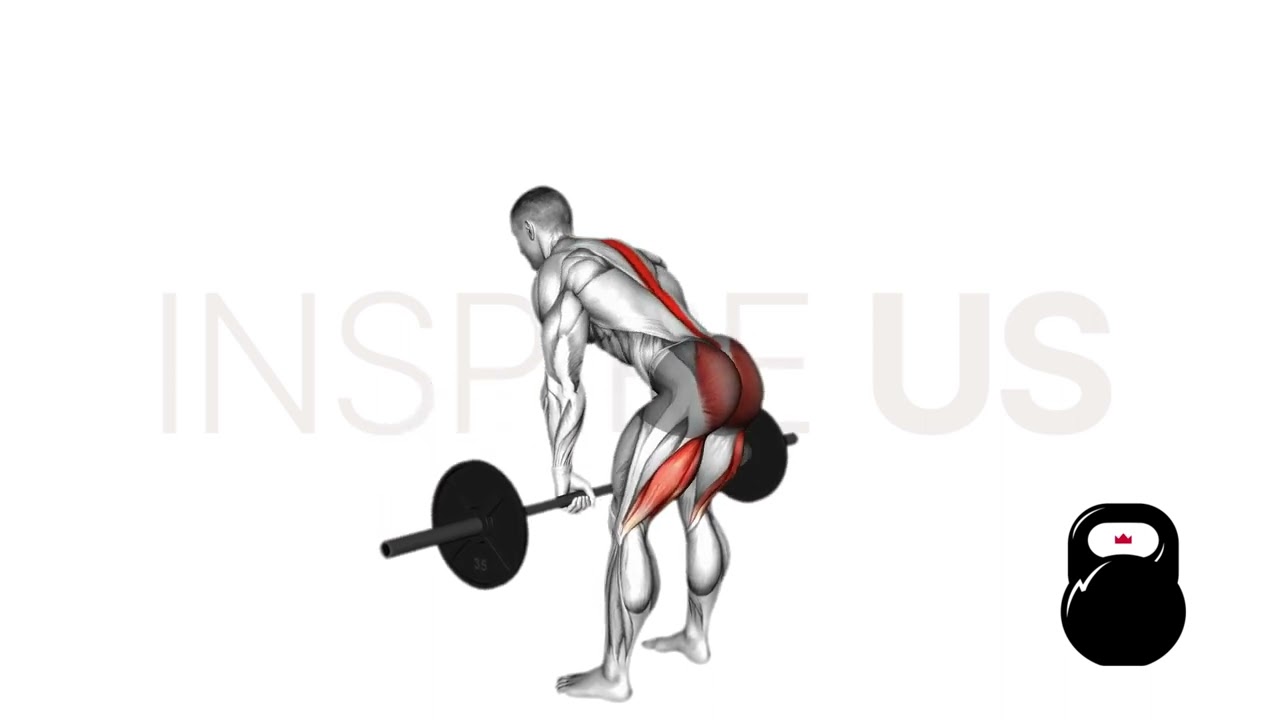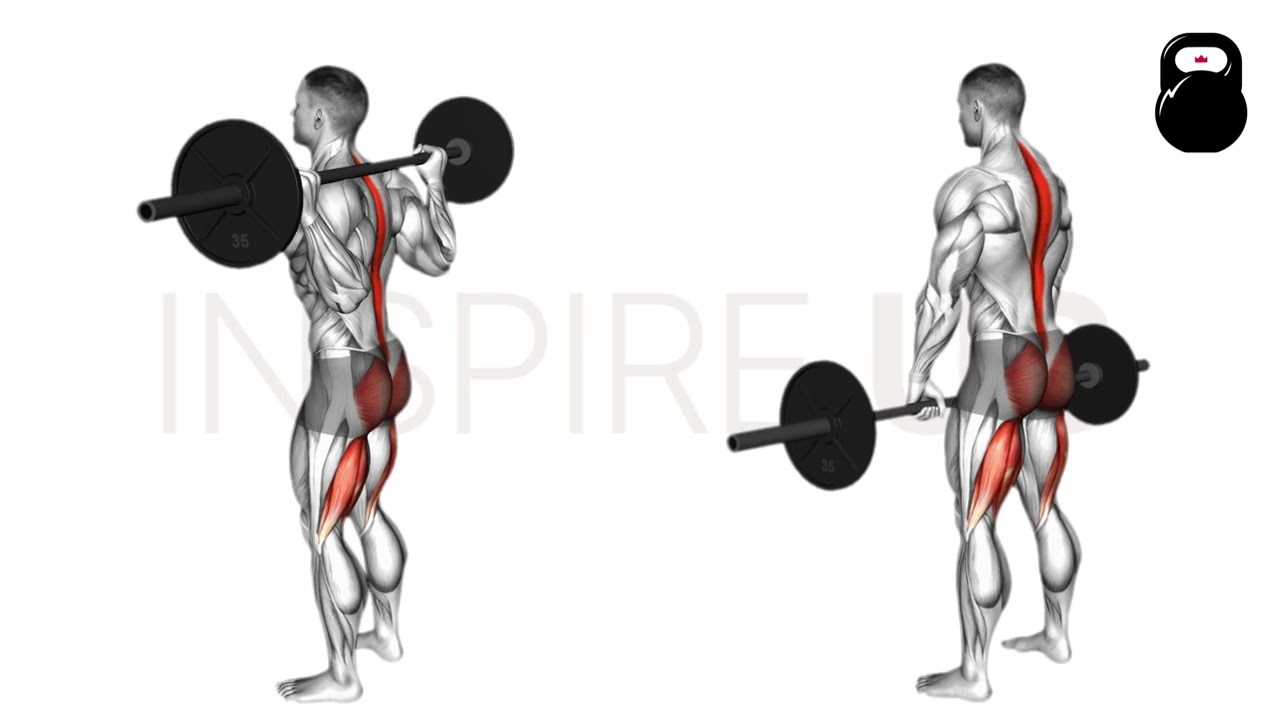Good Morning vs Romanian Deadlift (RDL): What's the Difference?
When speaking of hip-hinge accessory movements with significant carryover to more common lifts - there are few that can compare to the good morning and the Romanian deadlift (or RDL).
However, due to the intensity and complexity of both exercises, it is important for lifters to properly differentiate the two so as to ascertain which is more important for their training needs.
While the two exercises are far more distinct than it may seem, the differences may largely be condensed down to the position of the barbell on the lifter; Good mornings place the barbell atop the back, whereas Romanian deadlifts involve the barbell being held in the hands.
This difference in barbell placement can significantly alter weight loading mechanics, limiting factors, muscular recruitment emphasis and even each lift’s applicability to specific training goals.
What are Good Mornings?
Good mornings are a multi-joint compound exercise primarily utilized for strengthening the posterior chain in powerlifting and other performance-focused training programs.
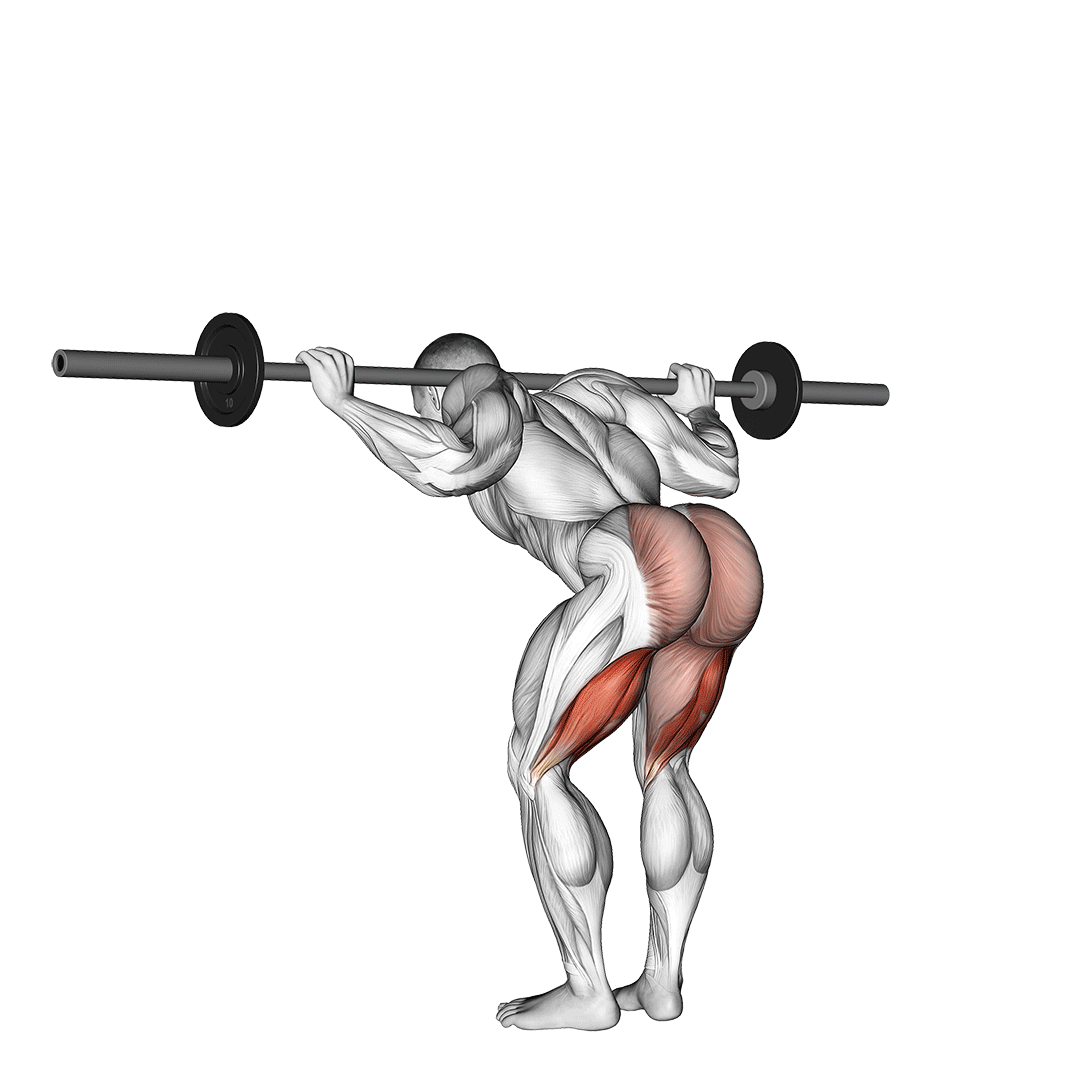
The good morning is primarily paired with other heavy lower-body compound exercises in the role of an accessory compound movement, and is most often included into workouts involving exercises like the back squat or leg press.
Unfortunately, good mornings have earned a reputation for being potentially dangerous due to the injury risk they place the lower back at; Performing the exercise with perfect technique, a reasonable amount of weight and professional coaching is an absolute must.
Benefits of Good Mornings
Good mornings reinforce and strengthen the entirety of the posterior chain, including mechanics like back extension, hip movement and knee flexion/extension. This creates a carryover effect to other activities that may include said biomechanics or the muscles responsible for them.
In addition, the good morning is comparatively better than many other compound accessory movements performed for lower body strengthening.
Alternative exercises like the half-squat or lunge can fail to target the lower back and certain other muscle groups, providing a less complete training stimulus than what good mornings are capable of.
How to Do Good Mornings
To perform good mornings, the lifter will stand upright with their feet set hip-width apart, a loaded barbell placed atop the middle of their trapezius muscles (not behind the neck). The hands should be out to the sides, securing the barbell against the back and aiding in balance.
Keeping the back in a neutral curvature, the lifter will then jut their hips back, contracting the core and bending slightly at the knees as the torso leans forward. The hips should follow this inclining of the torso, helping diffuse load away from the lower back and ensuring that the movement does not become a knee-driven action.
Once at the limit of the hip’s range of motion, the lifter will drive the pelvis forward and extend the knees - returning to an upright position and thereby completing the repetition.
What are Romanian Deadlifts?
Romanian deadlifts (or RDLs) are a multi-joint compound variation of the conventional deadlift, best known for their capacity to build up the posterior chain in a manner that other deadlift variations cannot.
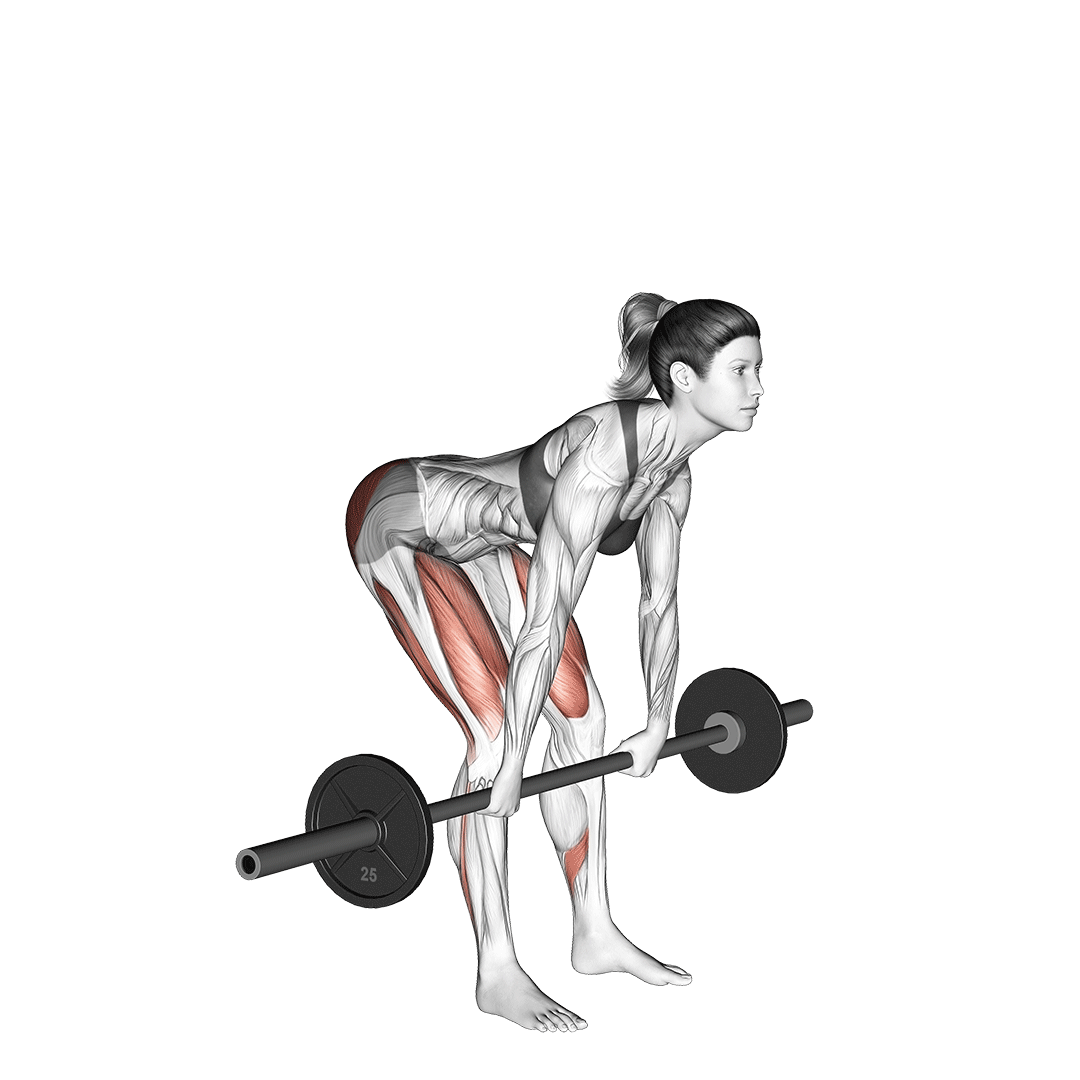
While they can act as a primary compound exercise in strength-focused workout plans, Romanian deadlifts are most effective when used as a supplementary or accessory compound movement for athletes, powerlifters and other performance-minded individuals.
Just as is the case with other types of deadlifts, Romanian deadlifts can result in serious injury to the lower back when performed incorrectly. Attention to proper form and warm-ups will be needed.
Benefits of the Romanian Deadlift
Romanian deadlifts are known for being highly effective at building up the posterior chain’s musculature, and any subsequent biomechanics related to said muscles.
Furthermore, there are few exercises comparable to the RDL in terms of athletic specificity and carryover, as it is capable of building not only gross lower body strength, but also power and explosiveness due to the applied muscular tension involved.
Few lower body compound exercises target the gluteal and hamstring muscles to the extent that the Romanian deadlift does.
When placed in the role of being a primary compound movement, Romanian deadlifts can result in not only stronger and more muscular legs, but also improvements in much of the back and forearms.
How to Do Romanian Deadlifts
To perform the Romanian deadlift, the lifter will grip a loaded barbell in the conventional deadlift stance, with a double-overhand grip and the hands set approximately shoulder-width apart.
To begin the actual repetition, the lifter then draws the hips backwards and bends slightly at the knees, allowing the torso to angle forwards as the hips move backwards.
This is known as a hip hinge, and is a vital mechanic in most deadlift variations.
Throughout the entire movement, the core must remain contracted and the spine in a neutral curvature so as to avoid injury. The resistance should be largely felt in the posterior section of the upper legs, and not in the back.
Once at the limit of their pelvic and lower back’s range of motion, the lifter will then push the hips forwards and extend their knees, completing the repetition.
Muscular Recruitment of Good Mornings and Romanian Deadlifts
Though the two exercises are quite different when viewed visually, they are in fact quite similar in terms of muscular recruitment.
Both good mornings and Romanian deadlifts work the muscles of the glutes, the hamstrings, the quadriceps, the erector spinae and the core - all of which create movement of the hips and knees, hence the fact that both exercises work them.
While the aforementioned muscle groups are the main drivers of force in either exercise, the Romanian deadlift also works several other muscles on account of its stance, most of which are not actually involved in a repetition of the good morning.
The Romanian Deadlift’s Additional Muscular Recruitment
Due to the fact that the lifter is gripping the barbell during the Romanian deadlift, muscles like the forearms, trapezius and latissimus dorsi will also be trained to a moderate extent.
This can make programming the RDL more difficult in certain contexts, but can also be a boon for athletes seeking a more functional training stimulus.
Muscular Emphasis Differences
Apart from the fact that Romanian deadlifts work a few more muscles than good mornings, the two exercises also differ in terms of recruitment intensity, where one exercise will focus more on a specific set of muscles than the other.
For good mornings, this is primarily the erector spinae and other muscles located in the back.
Conversely, Romanian deadlifts will target the hamstrings and glutes to a greater extent.
Stance and Mechanics Differences of Good Mornings and RDLs
Although the actual bar placement is clearly different between the two, good mornings and Romanian deadlifts also feature several less obvious differences in technique.
The majority of these distinctions are dictated by bodily positioning and the subsequent mobility differences therein, and should be taken into account when deciding on which exercise to perform.
Gross Resistance Capacity
In terms of how much weight may be lifted with either exercise, Romanian deadlifts can allow for somewhat more weight due to the position of the barbell relative to the body - of which is in a far more advantageous position than would be the case with good mornings.
Range of Motion
With multi-joint compound exercises like the good morning or Romanian deadlift, differences in range of motion are primarily caused by individual bodily proportions or mobility - but loading distribution may also play a factor as well.
Unless the lifter is already well-versed in maintaining spinal neutrality, many will find that the good morning allows for a slightly larger range of motion due to its loading of the upper back - whereas the Romanian deadlift will be more difficult to perform with a large range due to the greater difficulty in maintaining a straight back.
This can be further compounded by the fact that the Romanian deadlift involves the barbell being relatively detached from (and in front of) the torso, requiring greater mobility and form adherence.
Of course, this can vary between individuals, and the opposite may be true for lifters with a comparatively short torso.
Limiting Factors
Limiting factors can directly reduce the effectiveness of a given exercise by preventing the completion of full-volume sets, by reducing time under tension or otherwise by causing a lifter to perform an exercise to a sub-optimal capacity.
The primary limiting factor between the two exercises is mobility, but Romanian deadlifts can further complicate training by factoring in grip strength as well.
Unlike good mornings, Romanian deadlifts cannot be performed for a full set unless the lifter is physically holding the barbell in their hands; For individuals without access to wrist hooks or straps, this can cause the Romanian deadlift to be inferior to the good morning.
Risk of Injury and Joint Impact of Good Mornings and Romanian Deadlifts
Exercises like the good morning have earned an arguably unfair reputation for causing injuries to the lower back. This is primarily due to poor form adherence causing an inflated risk of injury, but may also be due to inherent issues caused by the stance of the lifter.
Before delving deeper into this distinction, it is important to keep in mind that both good mornings and Romanian deadlifts are solid and relatively safe exercises on their own. They are unlikely to lead to injury when performed with proper form and programming.
Load Distribution
During the apex of their execution, good mornings will distribute the resistance more dangerously through the lower back - potentially leading to a higher risk of injury if the spine is not held firmly in a neutral curvature.
This is not as much an issue for the Romanian deadlift, so long as the lifter ensures that the barbell is kept close to the lower body.
In addition, the actual gross load of the barbell is distinctly further from the body’s center of gravity during good mornings. This can lead to issues like a loss of balance or hyperextension of the lower back, whereas Romanian deadlifts will place the barbell intimately close to the center of gravity and are therefore safer to perform.
Joint Impact Differences
Unless recovering from previous injuries, good mornings and Romanian deadlifts are not that different in terms of joint impact.
However, in the event that an injury occurs, good mornings are more likely to result in injuries of the lower back - simply due to the fact that less joints are translating the weight and that the barbell is atop the back, leading to greater shear force on the lower section of the back.
Weightlifting Carryover of Good Mornings and Romanian Deadlifts
Both good mornings and Romanian deadlifts are excellent at improving a lifter’s performance at other athletic activities - but, in terms of weightlifting staple movements, they differ.
Due to the bar position of good mornings, a more back squat specific training stimulus is produced, despite the fact that Romanian deadlifts also feature similar hip hinge mechanics.
On the other hand, Romanian deadlifts greatly aid in conventional deadlift execution and technique adherence - far more than good mornings would.
In the end, if pure weightlifting exercise specificity is desired, it is best for the athlete to perform specificity-focused variations of the lift they wish to improve upon. Good mornings and Romanian deadlifts are supplementary exercises, and may not be as effective as pin squats or block deadlifts.
Frequently Asked Questions (FAQ)
Can You Do RDLs and Good Mornings in the Same Workout?
Because of their similar mechanics and muscular recruitment, it is poor programming to perform both good mornings and Romanian deadlifts in the same training session.
Instead, one may cycle between the two during separate workouts, or pick the one that is most appropriate for their needs.
Are Good Mornings or RDLs Better for Glutes?
Both good mornings and RDLs are effective glute-builders, but it is the Romanian deadlift that is more likely to result in muscular growth. This is on account of the greater resistance used, as well as the fact that RDLs show greater leg muscle recruitment in comparison to good mornings.
Are There Alternatives to Good Mornings and RDLs?
Yes - there are plenty more exercises of a similar nature to good mornings and Romanian deadlifts. If neither movement fits your needs, exercises like back hyperextensions and deficit deadlifts could fit the bill.
So - Which Exercise Should be Used?
Despite their similarities, picking the wrong exercise over the other can result in less-than-ideal training results.
To recap:
Good mornings are the better choice for lifters seeking a supplementary posterior chain exercise that does not include muscles like the forearms or trapezius, although extra attention should be paid to spinal injury risk and body stance.
Alternatively, Romanian deadlifts are the superior option for lifters who do not mind the inclusion of further muscle groups and are seeking greater development of their posterior chain muscles through gross resistance.
Both exercises have their specific use cases, but regardless should both be programmed and performed correctly.
References
1. Vigotsky AD, Harper EN, Ryan DR, Contreras B. Effects of load on good morning kinematics and EMG activity. PeerJ. 2015 Jan 6;3:e708. doi: 10.7717/peerj.708. PMID: 25653899; PMCID: PMC4304869.
2. Frounfelter, Greg ATC, CSCS. Teaching the Romanian Deadlift. Strength and Conditioning Journal 22(2):p 55, April 2000.

